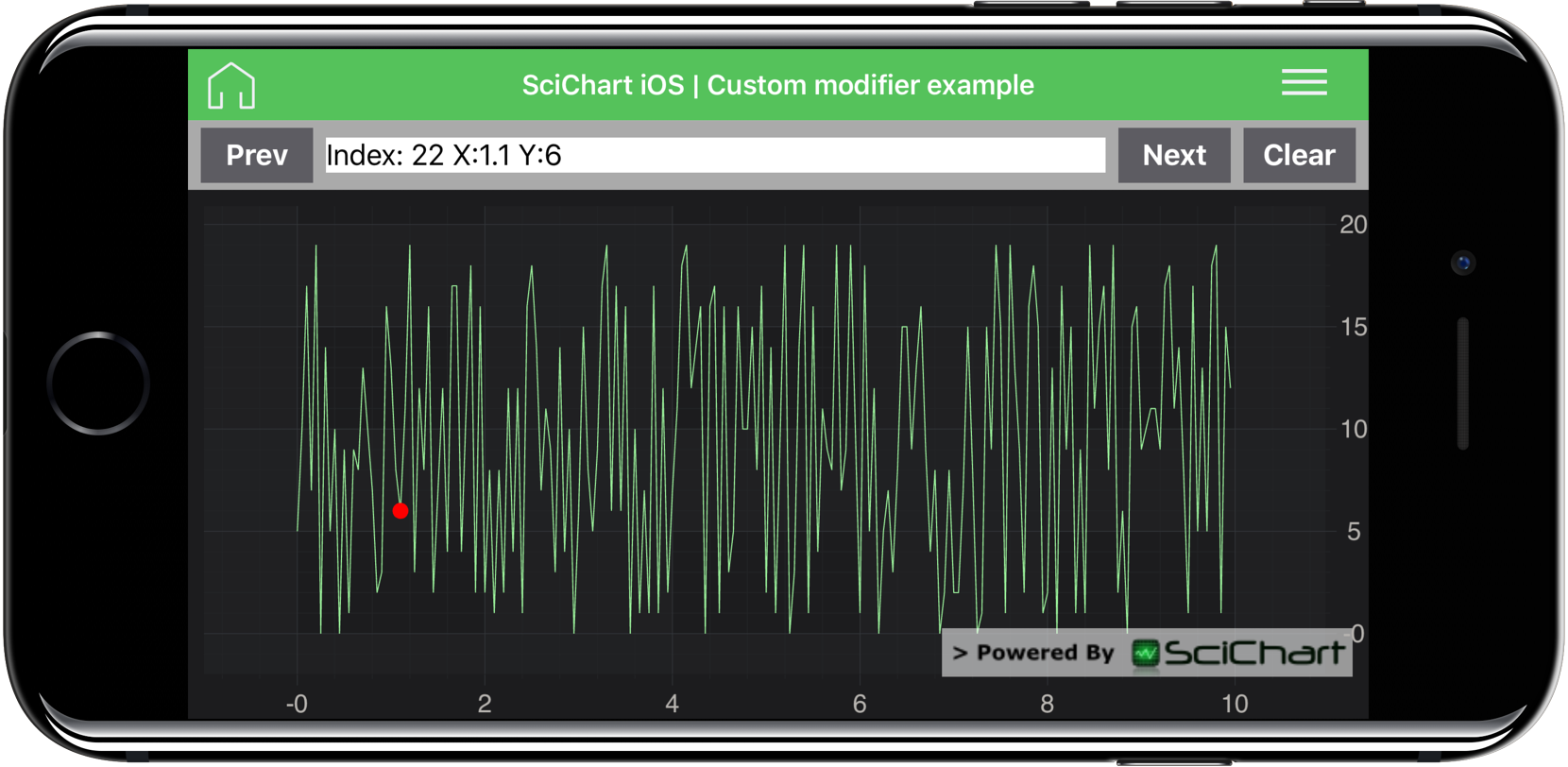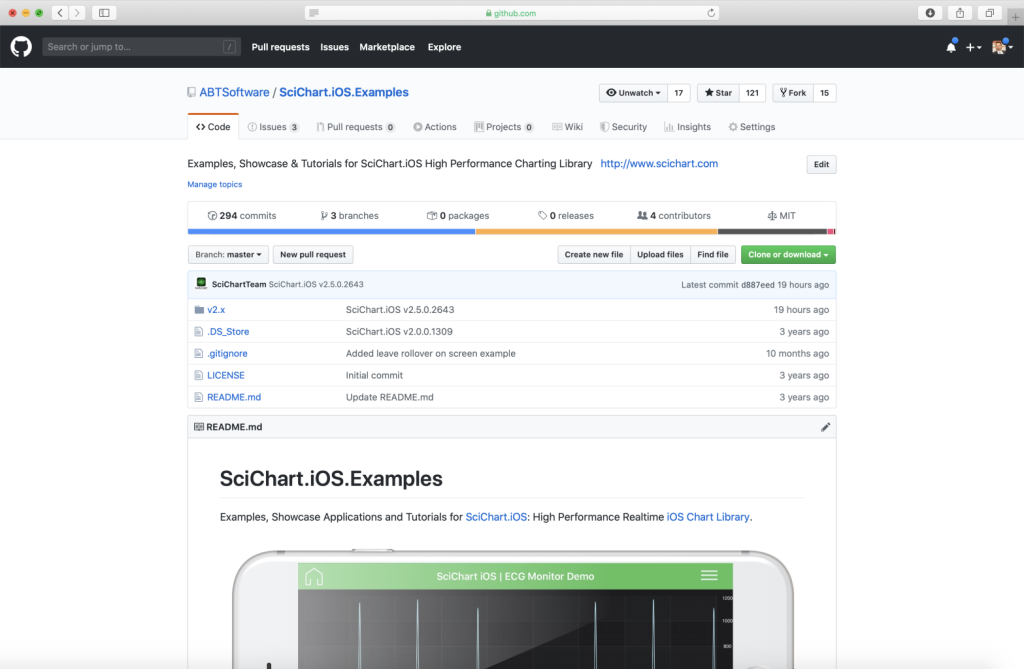iOS & macOS charts - Examples
Please note! These examples are new to SciChart iOS v4 release! SciChart’s OpenGL ES and Metal iOS and Metal macOS Chart library ships with hundred of Objective-C and Swift iOS & macOS Chart Examples which you can browse, play with and view the source-code. All of this is possible with the new and improved SciChart iOS Examples Suite and demo application for Mac, which ships as part of the SciChart SDK.
In SciChart iOS, we have a powerful Chart Modifier API which allows you to attach one or more behaviors onto the chart. In our iOS Chart Library, all the zooming, panning, tooltips and selection of series are implemented via SCIChartModifierBase derived types.
In this example we create a custom modifier which intercepts the tap gesture to draw an X-Y point on the chart. Using our powerful APIs you can create your own Chart Modifiers for interaction with the chart, whether it be custom zoom, pan operations, custom selection or hit-test of points, or custom drawing over the top of the chart.
The Swift and Objective-C source code for the iOS and macOS Chart Custom Modifier example is included below (Scroll down!).
Did you know that we have the source code for all our example available for free on Github?
Clone the SciChart.iOS.Examples from Github.
Also the SciChart iOS and Scichart macOS Trials contain the full source for the examples (link below).


